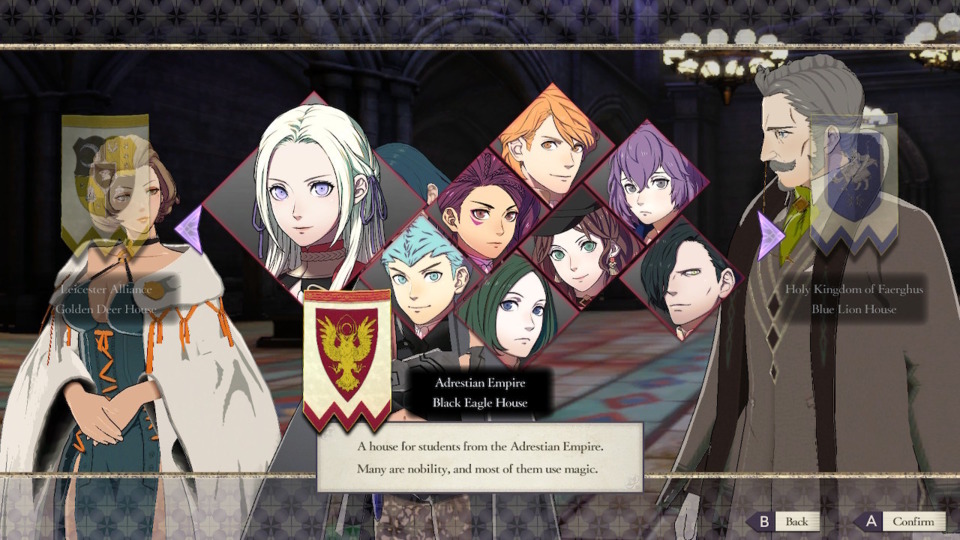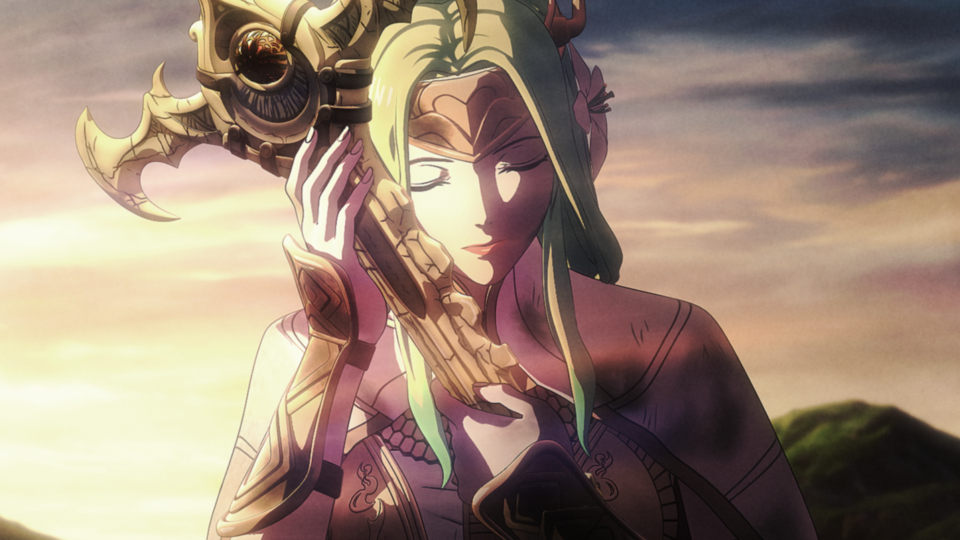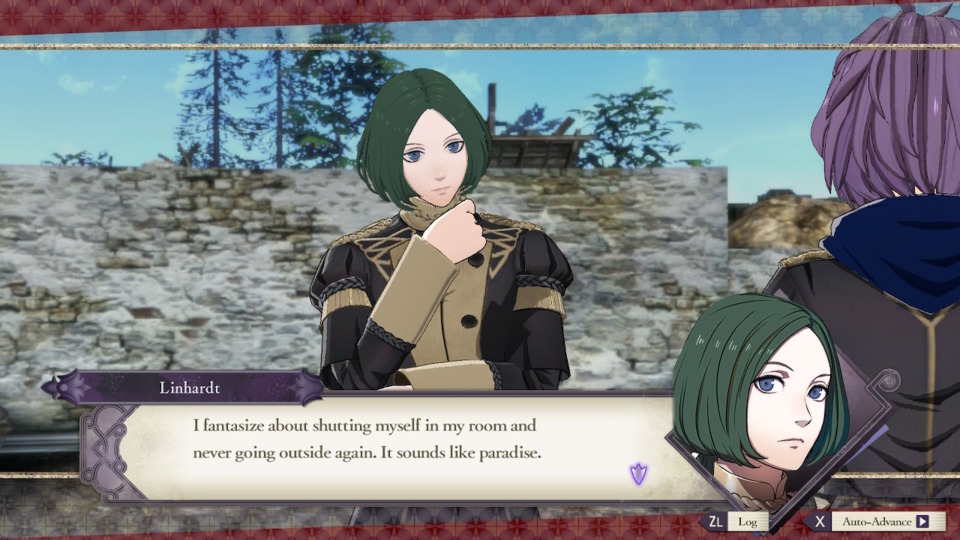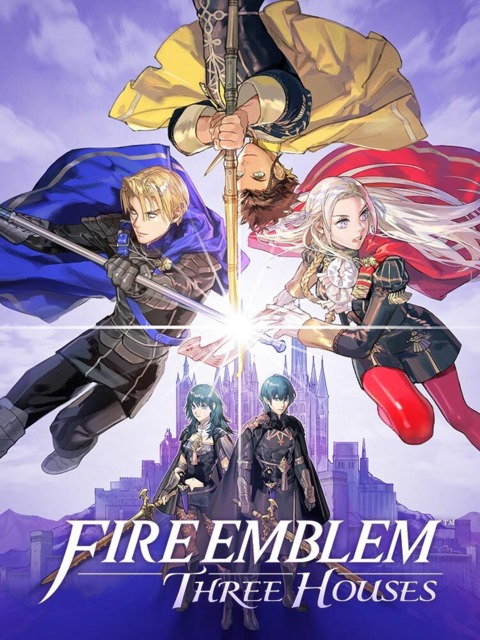An unforgettable experience with some clear flaws
Fire Emblem: Three Houses is a fantastic turn based strategy game with social sim mechanics. The series has been kicking along for more than two decades but hasn’t garnered much interest from the West until FE: Awakening. The FE games have mostly been iterative, making minor tweaks to each subsequent game. That paradigm changed with FE: Path of Radiance for the GameCube. It was Intelligent Systems’ most ambitious Fire Emblem release at that time: it was the first Fire Emblem game in 3D. The game featured animated cutscenes and a more in-depth plot than its predecessors. Unfortunately the game was mostly forgotten due to being on the GameCube and being released near the end of the console’s lifecycle.
FE: Awakening was the booster shot the series sorely needed. It helped reinvigorate the series and introduced a whole new legion of fans to Fire Emblem who might have only been previously familiar with the series due to Smash. Finally we get to Three Houses. Three Houses feels like that ambitious leap forward that FE: Path of Radiance once made, but this time with a much larger fan base and on an overwhelming popular console.

The setting of Three Houses is reminiscent of a religious medieval version of Harry Potter blended with the social sim aspects of a Persona game. There are three houses which represent the different regions in the land of Fódlan: the Black Eagles, the Blue Lions and the Golden Deer. At the land’s center sits Gregg Mach Monastery, part church, part elite military academy. You play as Byleth, a mercenary of mysterious origin suffering from a case of typical JRPG amnesia. After assisting the three house leaders with some bandits, you are invited to Garreg Mach Monastery and are quickly hired as a professor. As a professor, you are given the opportunity to teach one of the three houses. Each house has their own interesting cast of characters. The Golden Deer for example are filled with misfits and weirdos, such as Raphael who only cares about food or Marianne who would rather talk to animals than to people.
The story of Three Houses is rather unique in that it wholly depends on the decision of which house you select. The three houses have their own B storylines that feature unique characters and maps making the multiple playthroughs of the game feel fresh. The A plotline for all three houses remains fairly similar however, so the same events and battles take place albeit from different viewpoints. The initial premise of the game is intriguing. There are the political ramifications of having the heir to the emperor, future king and duke’s son all students at the monastery. The religious organization, the Church of Serios has odd vibes as the leader of the church, Rhea preaches about peace and unity but has no issue executing those who rebel. Byleth is also a strange one as only she/he can see a mysterious girl that has the power to turn back time.
The game is split into two halves. Strategic turn based battles like previous Fire Emblem games and free-time exploring the monastery.

On the subject of battles, it is classic Fire Emblem turn based strategy without the Weapon Triangle. In past Fire Emblem games, the Weapon Triangle was a rock-paper-scissor-like system where wielding one type of weapon yields an advantage over another weapon. Three Houses replaces it with Combat Arts, Abilities and Battalions. Combat Arts are moves that deal bonus damage and grant special effects like extra range or higher hit rate at the cost of using more weapon durability. Abilities are passive buffs, that can range from simple stat increases to enabling an advantage when using a sword against an axe wielder (just like previous Fire Emblems with the Weapon Triangle). Battalions are akin to equippable squadrons that grant AOE attacks/buffs for a limited number of times.
The last big addition to the combat is the introduction of monsters. Monsters take 4 times as much space as a regular enemy. Each monster has a shield that can be chipped away with regular attacks or by employing a battalion. Once the monster’s guard has been completely broken, they are vulnerable and can be felled easily. There is also an aggro mechanic where monsters will always attack the unit who hits it with a battalion, so it’s important to strategize having your tanks draw the monster’s attention away from your fragile characters.
This game is time consuming, but in a good way. Between each major battle, Byleth has the opportunity to explore the monastery. Byleth can chat with the students and faculty, she/he can also share meals with them, invite them to tea parties and grow plants in the greenhouse. The free-time at the monastery is a great way to learn more about the history of Fódlan as well as bond with students from other houses. It is easy to spend hours exploring the monastery, helping students find lost items and planning what the students should learn so they can qualify for a specific class. It is also possible for Byleth to recruit students from other houses and faculty members to join your party once Byleth is proficient in a specific skill like being good at axes or having a high Charisma stat. If you don’t feel like doing this after every main battle, the game does provide an option to skip all of this and proceed to the next major plot point. However doing so completely robs you of all of the character interactions and special events that take place in the monastery.

Three Houses is far from perfect and suffers from a litany of technical issues. Character faces, hair and accessories are nicely detailed but their clothes are in very low resolution with pixelated stitching and blurry sigils. Backgrounds during key events are just plain ugly with low quality panoramic screenshots that warp the geometry making things like tables and benches unrecognizable. There are framerate issues when walking around the monastery or going into battle with many flying units. Quick traveling from one spot to another in the monastery will sometimes load you into an area where characters are invisible and can take up to 4 seconds to completely load in.
The gameplay side is also far from flawless. To be frank, the game on Normal difficulty is too easy. Normal mode allows you to grind endlessly to completely outlevel any opponent in the game. This ease also makes your characters so insanely strong that basic attacks are significantly more effective than using combat arts and battalions even though it was designed to be the other way around. Normal difficulty is so easy that you can choose the Auto-Battle option for most fights and not lose a single character. The Hard difficulty is a bit more challenging but still too easy in my opinion. While you do have to play more carefully and use combat arts more often, the AI in Hard difficulty is very basic and can easily be cheesed by positioning your units to lure one enemy at a time. Maddening difficulty in the meanwhile swings the difficulty slider in the complete opposite direction. This difficulty introduces rage-inducing scenarios with reinforcements that can spawn and attack on the same turn. Experience is so hard to earn in this mode that it is necessary to stick to one lineup. Lastly, it’s a mode reserved for FE veterans and can only be unlocked after the first playthrough.
Other than the game’s difficulty, it is a shame to report that a lot of the battle scenarios are fairly vanilla. There is little variety in main objectives and usually it’s to eliminate every enemy or defeat the enemy commander. Most of the maps are open fields, with little terrain variety other than forests that provide cover or desert that slow movement. The game introduces Fog of War, but it rarely gets utilized. In my entire playthrough, I only experienced a total of three Fog of War maps. There is one map that introduces warp tiles and switches, but this map mechanic only gets used once and then promptly forgotten. There are also maps with environmental damage such as lava or traps but I only encountered this type of map twice in the game. The side quests and paralogue quests (akin to Mass Effect loyalty missions) recycle maps found in the main story. Previous Fire Emblem games did better with maps with more interesting layouts such as featuring castles and forts with tight corridors.
The initial promise of the story starts to wane in the second half of the game. Without spoiling too much, the second half of the game is when the three houses are at war. You play the B storyline of the house that you’ve chosen. Because your perspective is limited to one house, it is hard to understand how some major characters you’ve encountered in the first half of the game undergo such dramatic transformations. The game does little to explain these characters’ motivations and the only way to learn their backstory is to choose their house on the next playthrough. Unfortunately the plot threads that were delicately started in the first half are wrapped up in a convenient and unsatisfying manner.
With all those nitpicks aside, Fire Emblem: Three Houses is still a phenomenal game. The world building, the characters and the plot all merge into an unforgettable experience. Each house features a unique perspective on the story and a cast of characters to fall in love with. There are clear problems with this game. The graphics are lacking and pale in comparison to other Nintendo first party Switch titles like Zelda: BotW or Super Mario Odyssey. The battle scenarios are very generic. And due to the nature of the second half of the game, it is hard to comprehend the entire story with one playthrough. Is Three Houses still worth it? Absolutely, there is a narrative and a lineup of interesting characters worth experiencing and after almost over 280 hours (according to what my Switch says) I don’t regret the time I spent with it.
